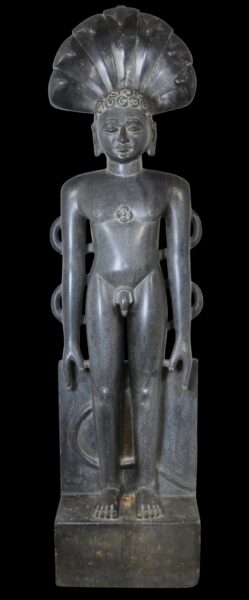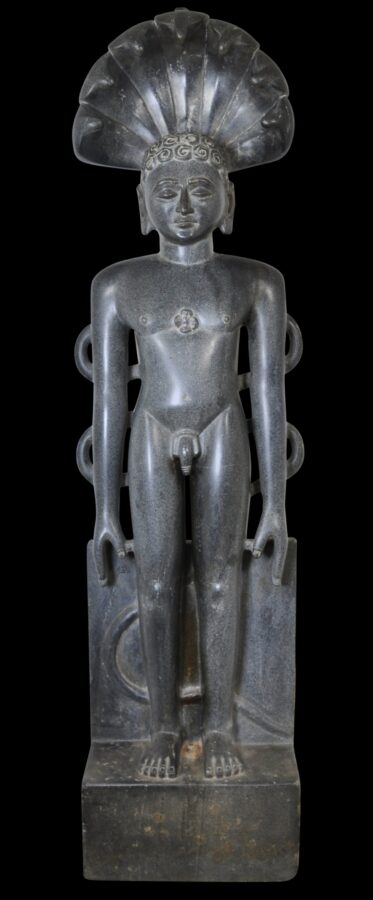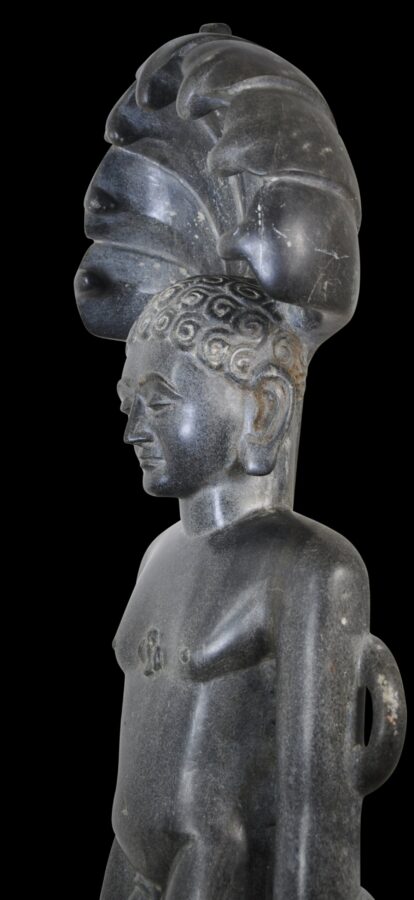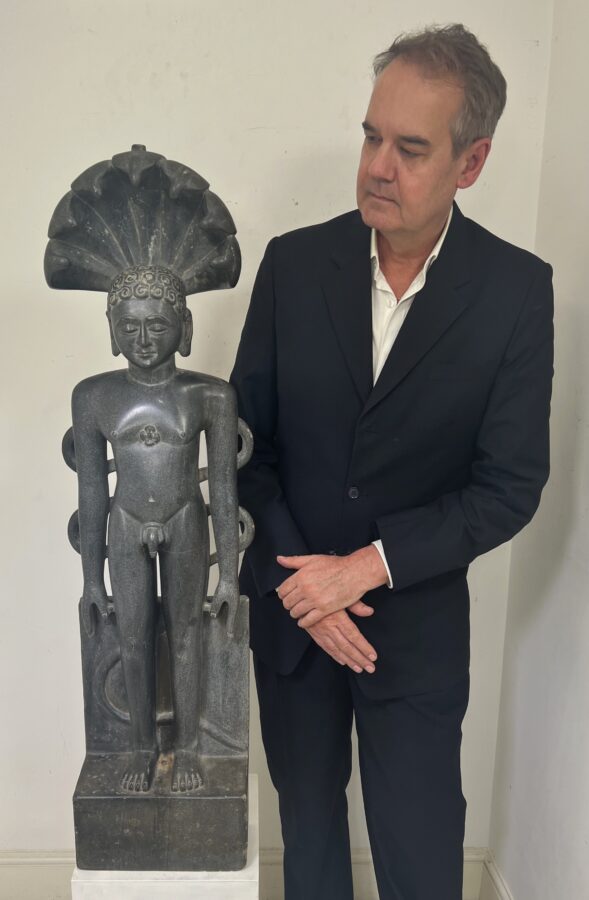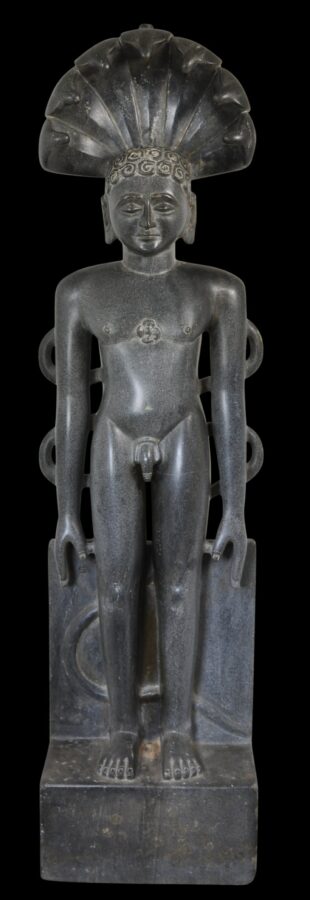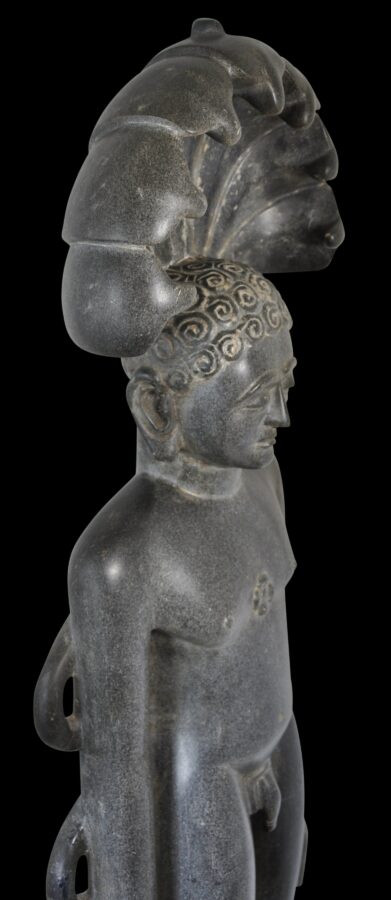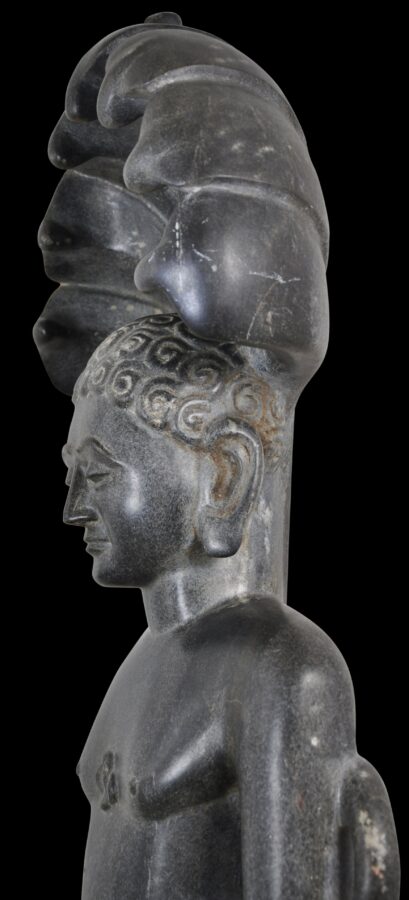This large image carved from a single block of black shale or schist represents Jain deity Parshvanatha who is said said have lived in the 7th, 9th or 8th centuries BC. Parshvanatha (also known as Parshva and Parasnath) was the 23rd of 24 tirthankaras (Jain spiritual teachers.) He was born in Benaras (Varanasi) and renounced worldly life and founded an ascetic community. He is regarded as the earliest tirthankara who is a historical figure.
Parshvanatha stands on a plinth, in kayotsarga pose with arms hanging freely, beneath a protective seven-headed cobra.
He is depicted naked – his body is slender and muscular – and has a srivatsa symbol on his chest. His hair is demonstrated by carved curls, his eyebrows are prominent and his nose aquiline. His ear lobes are slightly elongated denoting his princely origins before he became an ascetic. The cobra’s tail can be seen trailing behind his legs and its body is shown winding almost rhythmically on both sides of the rear of Parsvanatha.
Cobra-hood iconography is not unique to Parshvanatha. Suparshvanatha, the seventh of the 24 tirthankaras, also is often depicted beneath a hooded cobra – except that Suparshvanatha’s has five heads and not seven.
Parshvanatha is one of the five most revered tirthankaras, along with Mahavira, Rishabhanatha, Neminatha and Shantinatha.
The image here is in excellent condition. It has clear age and is without losses or repairs.
References
Guy, J., Indian Temple Sculpture, V&A Publications, 2007.


